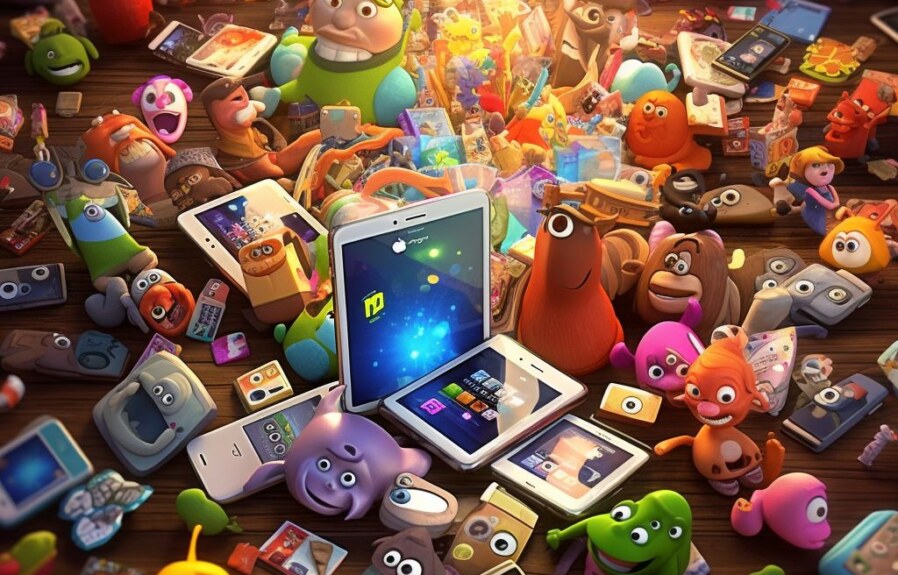Have you ever found an app on your iPhone that you never downloaded? Or noticed an app that doesn’t appear on your home screen, but is taking up valuable space on your device? These hidden apps can be frustrating and confusing, but luckily, there’s a way to delete them. In this article, we’ll discuss how to uncover and remove hidden apps on your iPhone, so you can free up storage and regain control of your device. Whether you suspect an app is hidden or just want to learn more about managing your apps, keep reading to learn how to delete hidden apps on iPhone.
1. Understanding Hidden Apps: What Are They and Why Are They on Your iPhone?
What Are Hidden Apps and Why Do They End Up on Your iPhone?
Hidden apps are applications that are not visibly displayed on your iPhone’s home screen. They are either intentionally hidden by the user or accidentally installed without their knowledge. These apps can run in the background and perform various functions, such as collecting and transmitting personal information, tracking your online activities, and consuming device resources, ultimately affecting your iPhone’s performance.
There are several reasons why you might have hidden apps on your iPhone. For instance, you may have downloaded an app that requests permission to hide its icon on your home screen. You might also have children or other family members who use your iPhone, and they could have installed hidden apps without you knowing.
Furthermore, some hidden apps can be intentionally disguised as other applications, making it challenging to identify and remove them from your device. These apps pose a considerable security risk since they can steal sensitive information, invade your privacy, and even cause damage to your iPhone’s operating system.
In the following sections, we will discuss the potential dangers of having hidden apps on your iPhone and provide you with step-by-step instructions on how to identify and delete them.
2. Why Delete Hidden Apps: The Risks and Effects on Your iPhone’s Performance
Hidden apps on your iPhone can pose serious risks to the security and performance of your device. They not only drain your battery life but also eat up precious storage space, leading to device slowdown and poor performance. Additionally, these apps can compromise your privacy as they may accumulate sensitive data or access critical features unnoticed.
One of the main reasons why you should delete hidden apps on your iPhone is to maintain the optimal performance of your device. Hidden apps are resource-intensive and can slow down your iPhone, making it less responsive and efficient. They can also affect other apps as they run in the background, consuming CPU and memory resources, ultimately leading to crashes and freezes.
Moreover, hidden apps can pose significant security risks as some may contain malware or spyware that can steal sensitive data or compromise your device’s security. These apps may also track your online activities, monitor your keystrokes, and create hidden backdoors for hackers to gain access to your iPhone.
Therefore, it’s crucial to get rid of these hidden apps as soon as you can. In the next section, we’ll show you how to identify these apps on your iPhone so you can take necessary measures to remove them and protect your device’s performance and security.
3. How to Identify Hidden Apps: A Step-by-Step Guide to Finding Them on Your iPhone
To delete hidden apps on your iPhone, you must first identify them. Hidden apps come in different forms, but they often hide in folders or disguised as other apps on your home screen. In this section, we’ll give you a step-by-step guide on how to find these sneaky apps.
Step 1: Search through Your Home Screen Apps
Take the time to scroll through each of your home screen apps to see if anything looks unusual or out of place. Sometimes hidden apps will appear as a folder, so take a closer look at all folders on your home screen. You can also use the search bar by swiping right from your home screen and typing in relevant keywords.
Step 2: Check Your iPhone Settings App
Certain hidden apps may not appear on your home screen, but you can find them within your iPhone’s settings app. To do this, navigate to your settings app and look for the “General” tab. From here, select the “iPhone Storage” option, and you will see a list of all your installed apps. If you notice an app with a larger file size than usual, it may be a hidden app.
Step 3: Utilize Third-Party Apps
If you’re having trouble identifying hidden apps or want an automated approach, third-party apps like App Hider or Private Photo (hihide) can help. These apps are specifically designed to hide apps and files, and they can also be used to identify hidden apps on your iPhone. Download and launch one of these apps, and it will scan your iPhone for any hidden apps and give you the option to delete them.
By following these steps, you can identify hidden apps on your iPhone and take the necessary steps to delete them. Remember to check your iPhone regularly to ensure that no new hidden apps have been added.
4. Methods to Delete Hidden Apps: From Uninstalling to Using Third-Party Apps
Now that you know why hidden apps can be problematic for your iPhone, it’s time to take action and get rid of them. In this section, we’ll go through some methods to delete hidden apps, from basic uninstalling techniques to using third-party apps.
Delete Hidden Apps Manually
The easiest way to delete hidden apps from your iPhone is by manually uninstalling them. To do this, follow these simple steps:
- Find the hidden app on your iPhone by using the search bar on your home screen.
- Hold down on the app icon until it starts shaking and the “X ”appears on the corner of the app icon.
- Tap on the “X” and choose “Delete” from the pop-up menu to remove the app from your iPhone.
However, some hidden apps may not show the “X” symbol, which can make it challenging to uninstall them. If that’s the case, you can try resetting the home screen by heading to Settings > General > Reset > Reset Home Screen Layout, or by updating your iPhone to the latest version of iOS.
Use Third-Party Apps
If manually deleting hidden apps is too complicated or time-consuming, you can also use third-party apps to help you clean up your iPhone. Some popular apps to consider are:
Uninstaller: This free app helps you find hidden and duplicate apps on your iPhone and allows you to bulk delete them in one go.
CleanMyPhone: A paid app that not only identifies hidden apps but can also clear up junk files, boost performance, and optimize storage space on your iPhone.
Revo Uninstaller Pro: A powerful app that not only helps remove hidden apps on your iPhone but also tracks down leftover files and registry entries to thoroughly clean out your device.
Using third-party apps can be a great option if you’re not confident with manually deleting hidden apps, but it’s important to remember that not all apps are created equal. Be sure to research and read reviews before downloading any app to avoid any potential risks or scams.
In the next section, we’ll discuss some security measures you can take after deleting hidden apps to protect your iPhone from future threats.
5. Security Measures After Deleting Hidden Apps: Tips to Protect Your iPhone from Future Threats
After successfully deleting all the hidden apps on your iPhone, it is important to take some security measures to protect your device from future threats. Here are some tips to keep your iPhone secure:
Enable Two-Factor Authentication:
Two-factor authentication adds an extra layer of security to your iPhone by requiring a unique passcode in addition to your regular password. This can prevent unauthorized access to your device and data. To enable two-factor authentication, go to Settings > Password & Security > Two-Factor Authentication.
Update Your iPhone Regularly:
Apple releases regular software updates that include important security patches. Make sure to update your iPhone as soon as updates become available. To check for updates, go to Settings > General > Software Update.
Be Mindful of Downloaded Apps:
Be cautious when downloading new apps. Only download apps from the App Store and read the reviews and ratings carefully. Avoid downloading apps from third-party sources or unverified developers.
Use a Password Manager:
Using a password manager can help you create and manage strong passwords for all your online accounts. This can prevent unauthorized access to your accounts, including those linked to your iPhone.
By following these security measures, you can help protect your iPhone from future threats and ensure the safety of your personal information.
People Also Ask
How do I find hidden apps on my iPhone?
To find hidden apps on your iPhone, swipe down from the center of the home screen and use the search bar. Type in the name of the app you suspect is hidden, and if it appears, you can easily move it back to the home screen.
Can you uninstall apps that are hidden on iPhone?
Yes, you can uninstall hidden apps on iPhone. Go to Settings > General > iPhone Storage, and scroll down to find the app you want to uninstall. Tap on it, and select “Delete App.”
How do I permanently delete hidden apps from my iPhone?
To permanently delete hidden apps from your iPhone, go to Settings > General > iPhone Storage. Find the app you want to delete, swipe left on it, and select “Delete.” Then, go to the Recently Deleted folder and select “Delete All.”
Why are apps hidden on iPhone?
Apps may be hidden on iPhone if they’re downloaded through Family Sharing and the user chooses to hide them from other family members. They can also be hidden if the user wants to declutter their home screen.
Is it safe to use third-party apps to delete hidden apps on iPhone?
Using third-party apps to delete hidden apps on iPhone is not recommended as it may compromise your device’s security. Stick to the official method of uninstalling apps through iPhone settings.
Conclusion
Now that you know how to delete hidden apps on iPhone, you can easily declutter your device’s home screen and storage space. Remember to use the official method of uninstalling apps through iPhone settings for a safer experience.



